
About two weeks before what would end up being my last trip to Standing Rock, I was a guest speaker for Indigenous Peoples Day at a Chicago school, where I explained to a group of about 80 fourth through eighth graders how Native youth had created an encampment to resist the Dakota Access Pipeline, and how that pipeline threatened to contaminate the drinking water of the Standing Rock Sioux. The students were excited to learn that there were children in the Standing Rock camps, and that the movement had been created by young people. At the end of our discussion, the children made blue, river-shaped banners bearing messages of hope and love for those on the front lines. I had planned to mail them to my friends in Standing Rock, but as fate would have it, I wound up hanging them myself, in one of the kitchen tents in Oceti Sakowin.
My health was lousy at the time, and I had promised my husband that my second trip to Standing Rock, just one month prior, would be my last for the year. But then, just before Halloween, police launched an assault, raiding one of the movement’s encampments and threatening others. The last word I received from one of my friends that day before losing touch for hours was: “We’re trapped. Guns drawn on us on [highway] 1806. Please help.”
I knew I had to go back.
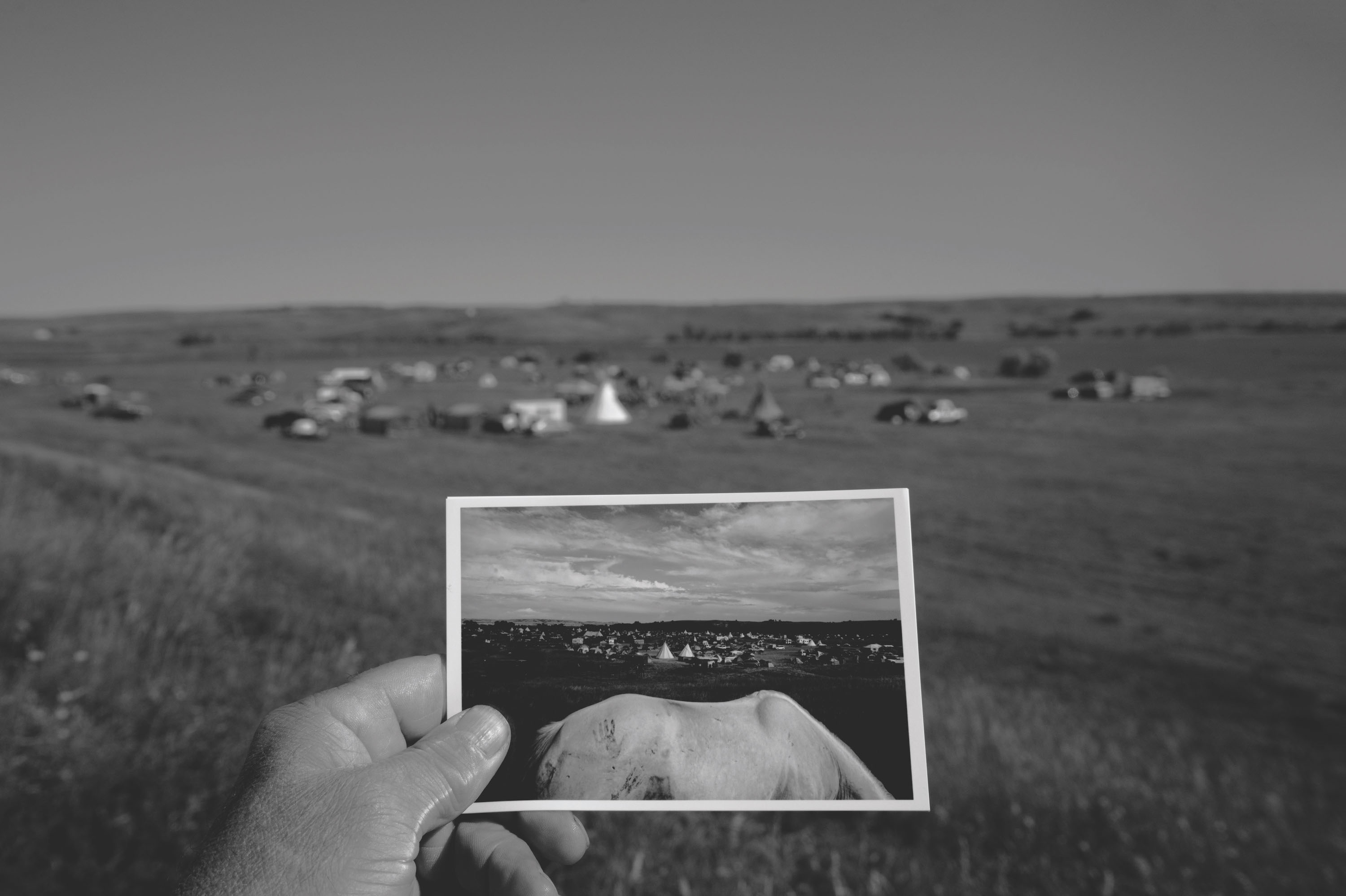
(Photo: Larry Towell/Magnum Photos)
I wasn’t the only one who felt that pull. In the spring and summer of 2016, a magnetic energy was born in Standing Rock. Native people, from hundreds of indigenous nations—some of which had been at odds with each other for centuries—had felt that energy and traveled to North Dakota. I had been there in the early days, when no more than a dozen tents dotted the shoreline encampment at Sacred Stone. One of the Native youth who launched the encampment had asked me to come lead some skill-shares on direct action and protest tactics. Native mothers, fathers, and young children crowded around me on that first visit as I explained the mechanics of a basic blockade. In all my years as an organizer and a direct-action trainer, I had never experienced such a space.
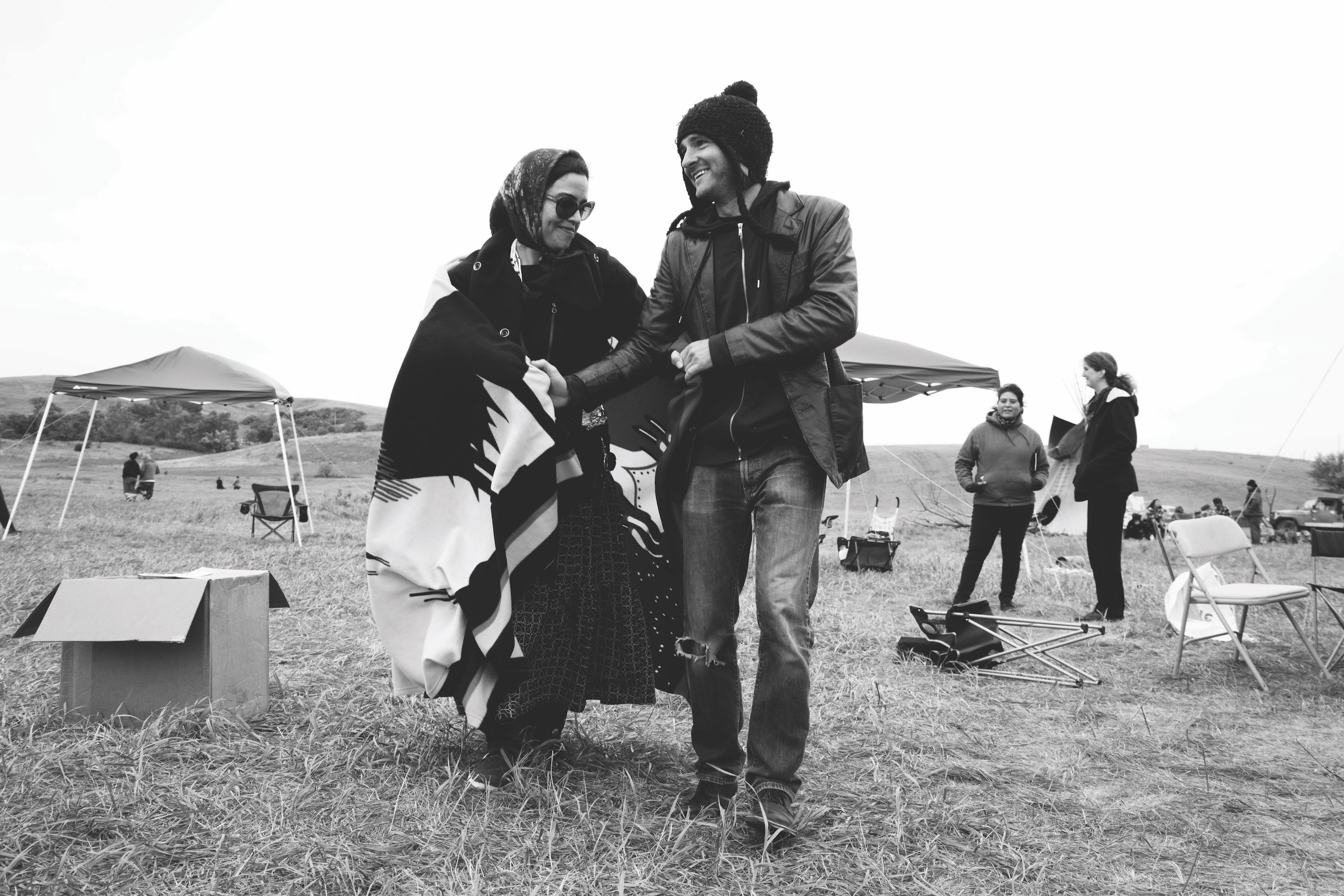
(Photo: Larry Towell/Magnum Photos)
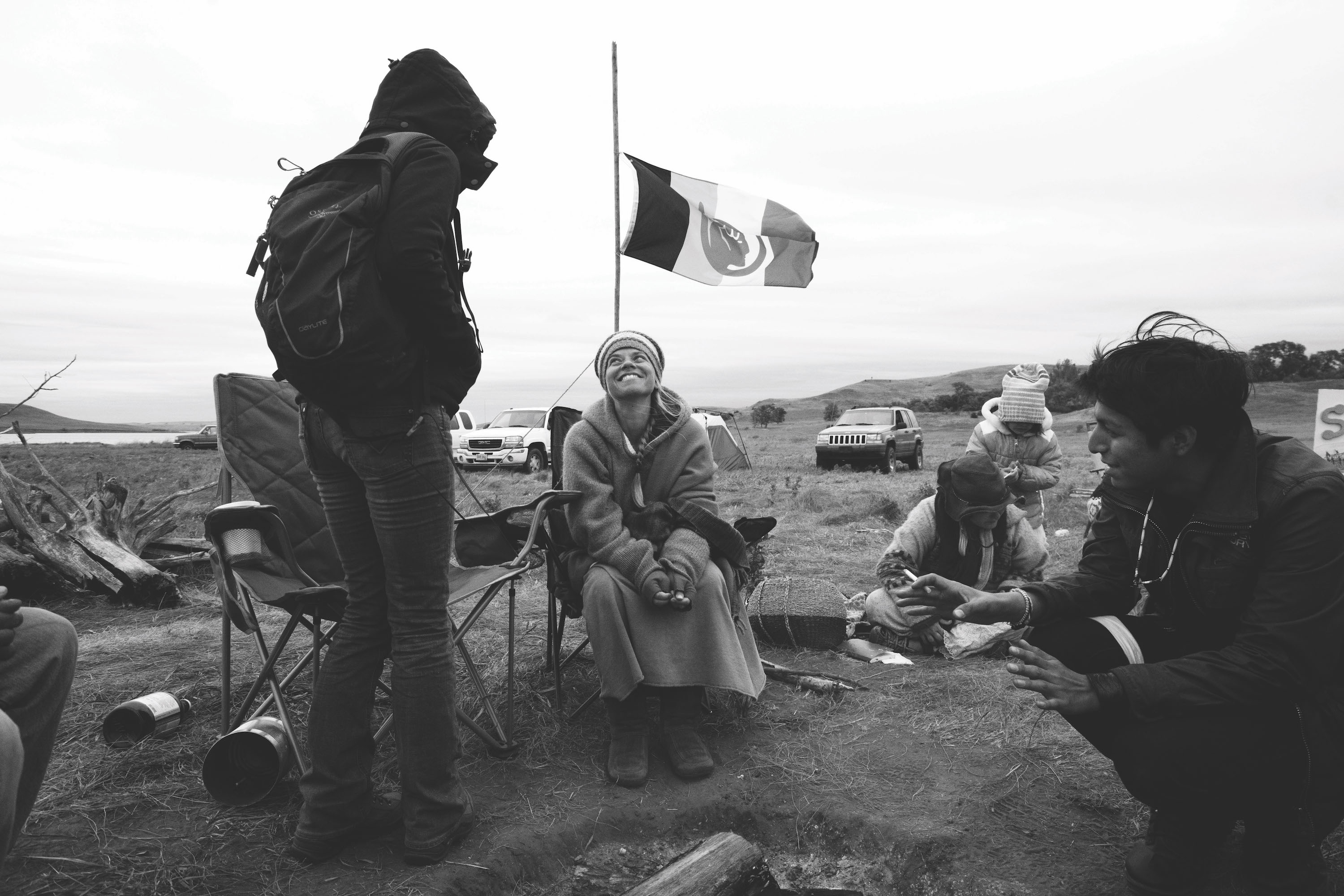
(Photo: Larry Towell/Magnum Photos)
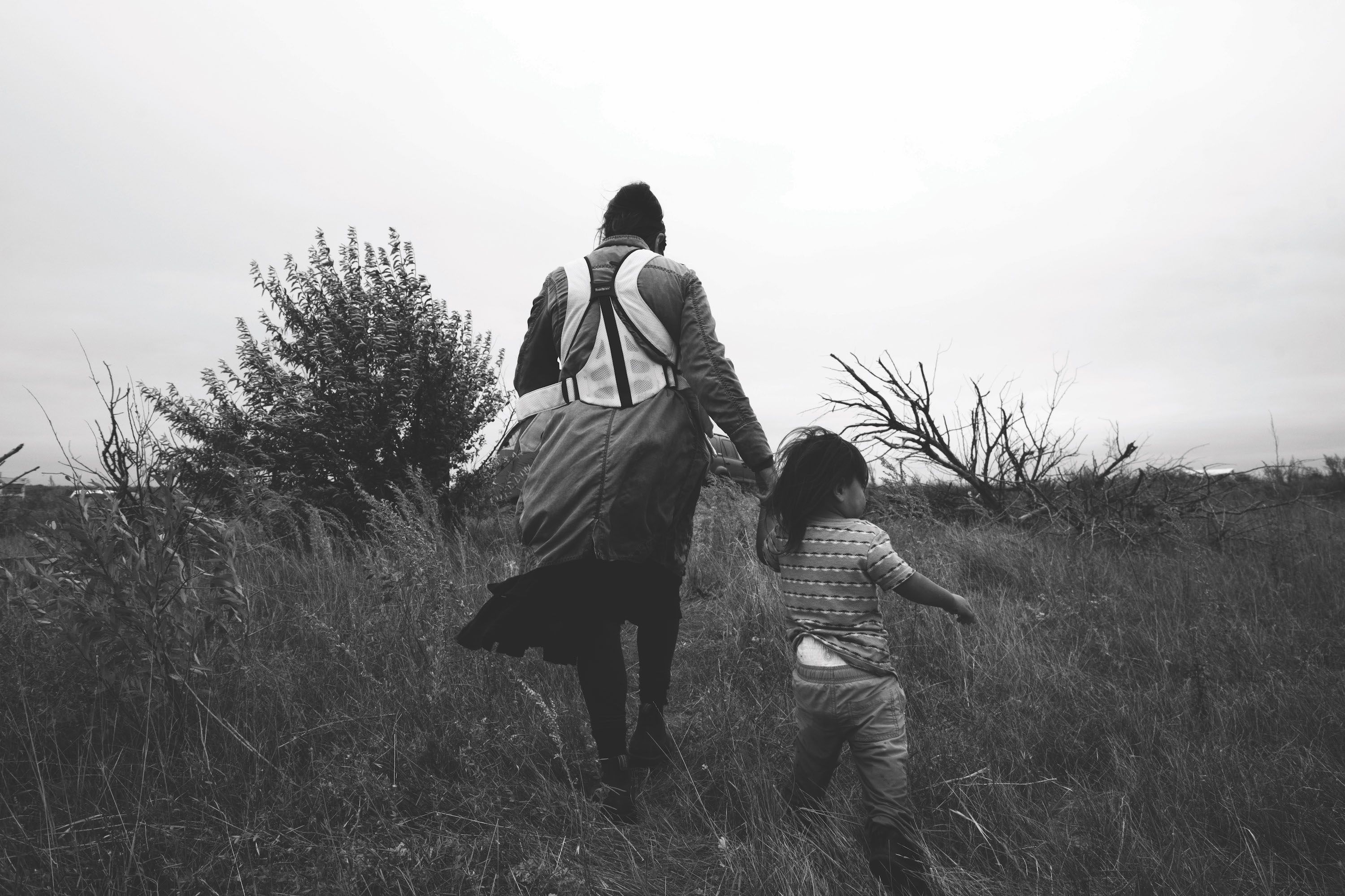
(Photo: Larry Towell/Magnum Photos)
For Native people, the camps marked a cultural intersection between prayer and protest. The term Water Protector emerged as a descriptor for those holding space to stop the pipeline. It was a time of spectacular convergence. Centuries-old feuds between Native peoples were put aside, as once-hostile tribes joined the camps, bearing tobacco, firewood, and other gifts. The space was full of songs, history, and potential. From quiet, prayerful marches to complex lockdowns that halted construction equipment, a new chapter of our history was being written, in real time. For Native people, 2016 was a year of tension, hope, and action. The movement at its height wasn’t just inspiring, but life-giving.
Then we experienced the effort’s final defeat. In 2017, the camps were raided, the Dakota Access Pipeline was completed, and oil now flows through the Black Snake. So what is the legacy of Standing Rock, and that moment in time, when everything seemed possible?
Well, it’s complicated.
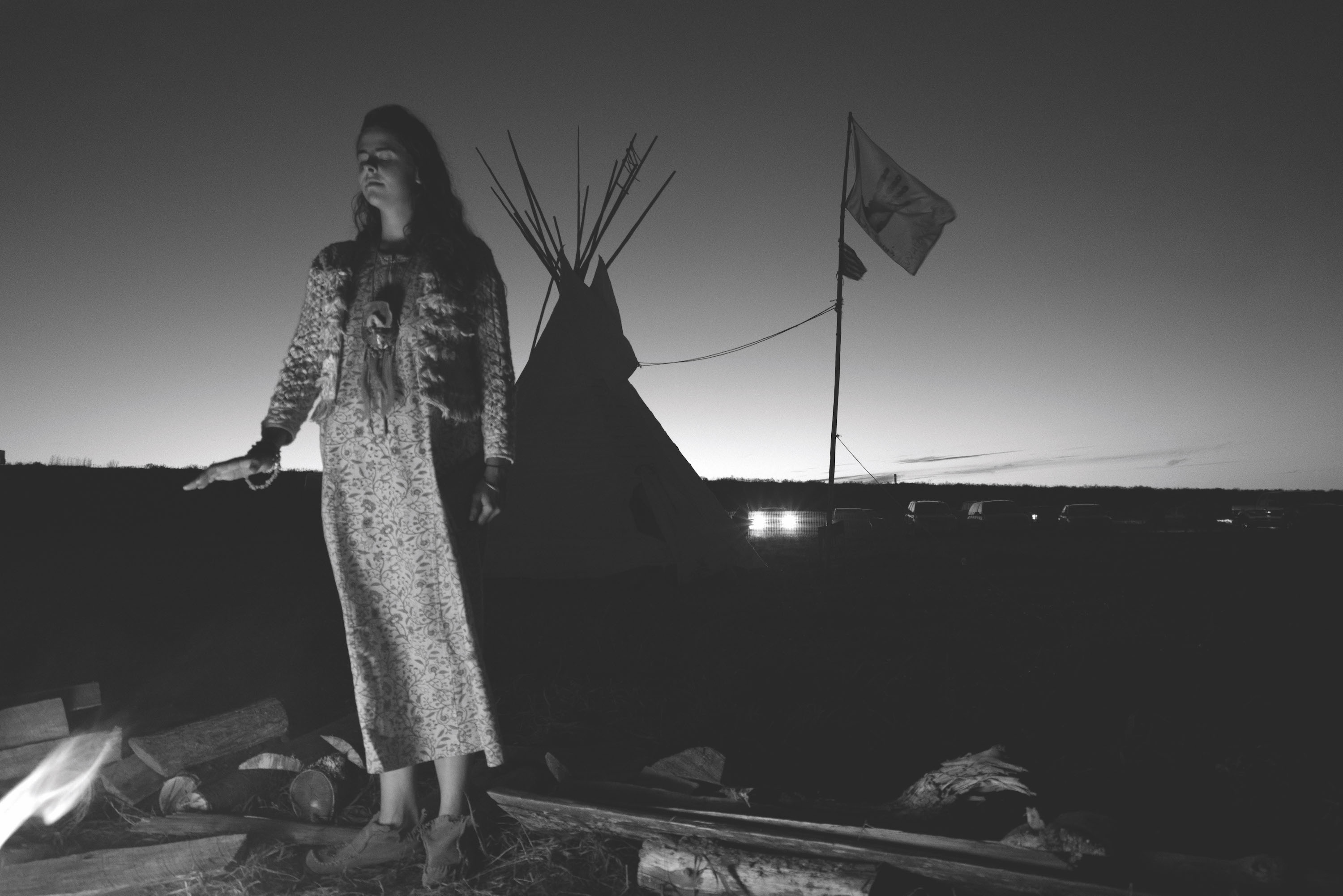
(Photo: Larry Towell/Magnum Photos)
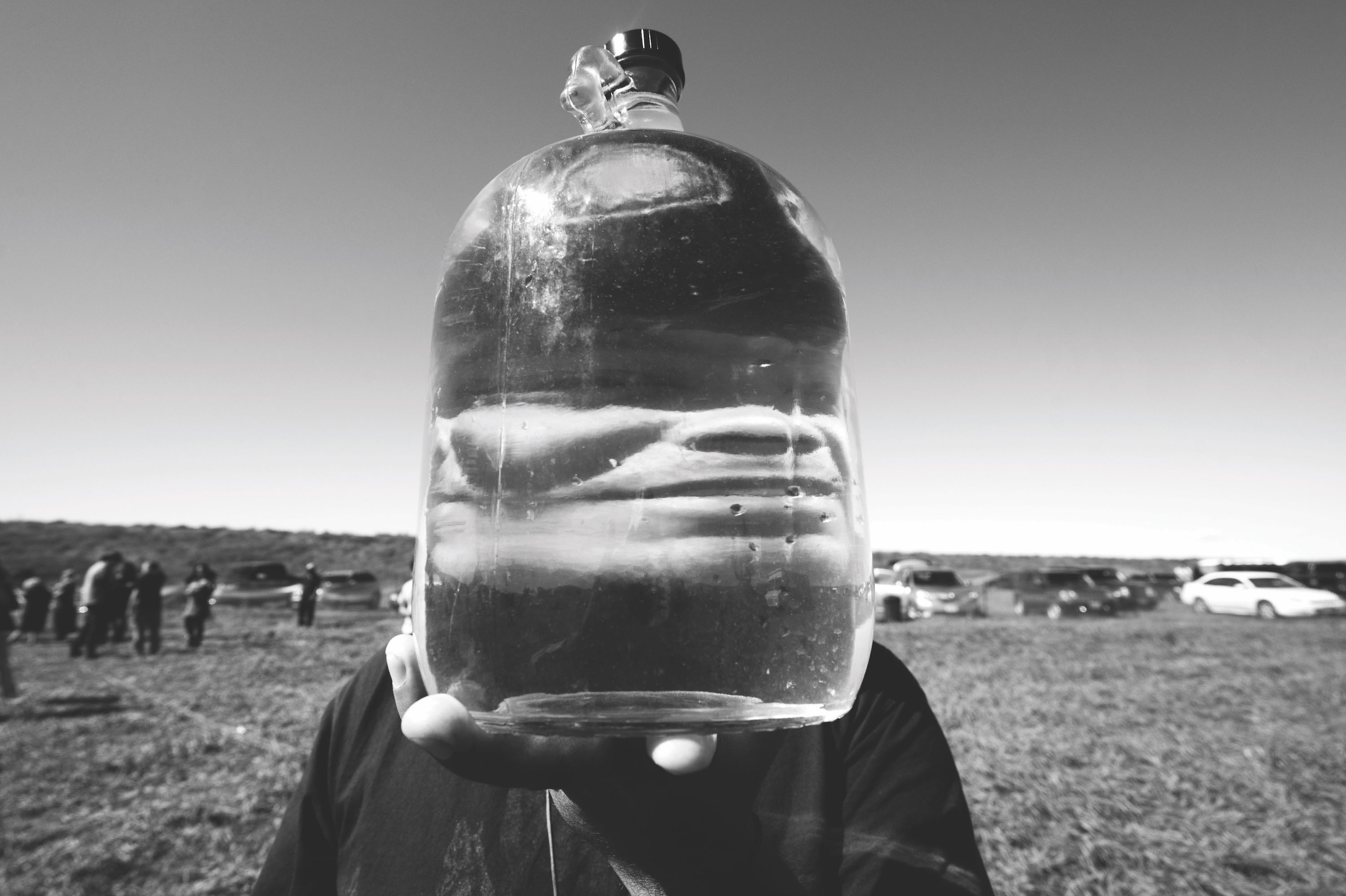
(Photo: Larry Towell/Magnum Photos)
When Oceti Sakowin camp was raided on February 23rd, 2017, residents of the encampment were either arrested or forced to flee across the frozen Cannonball River. Native organizers sprang into action, arranging rides for hundreds of stranded Water Protectors who had a new task ahead: returning to their lives. Having neglected a great deal for the sake of the movement, some had little to return to. Defeat breeds anguish, and, in the wake of that dispersal, our people were hurting, emotionally and physically. Depression and post-traumatic stress disorder, brought on by militaristic police violence, worsened the ongoing threat of suicide among our young people. Over 800 Water Protectors were facing charges, some of them felonies, ranging from “physical obstruction of a government function” to “use of fire to commit an offense” and “civil disorder.”
On the Standing Rock Sioux Reservation, moving on from the camps meant recovering from the closure of Backwater Bridge, which the Department of Transportation had shut down, citing structural concerns, in late October of 2016, and which the sheriff didn’t reopen until after the camps were fully evicted. The closure was enforced with a barricade against protesters, who police thought might try to halt pipeline construction, but it also functioned as an economic embargo against the Standing Rock Sioux. The closure added hours to local commutes, whether for work, food, or medicine. Highway 1806 is also an essential route to the Prairie Knights Casino, which provides crucial revenue for the tribe and reports having lost $6 million as a result of the protests and the bridge closure.
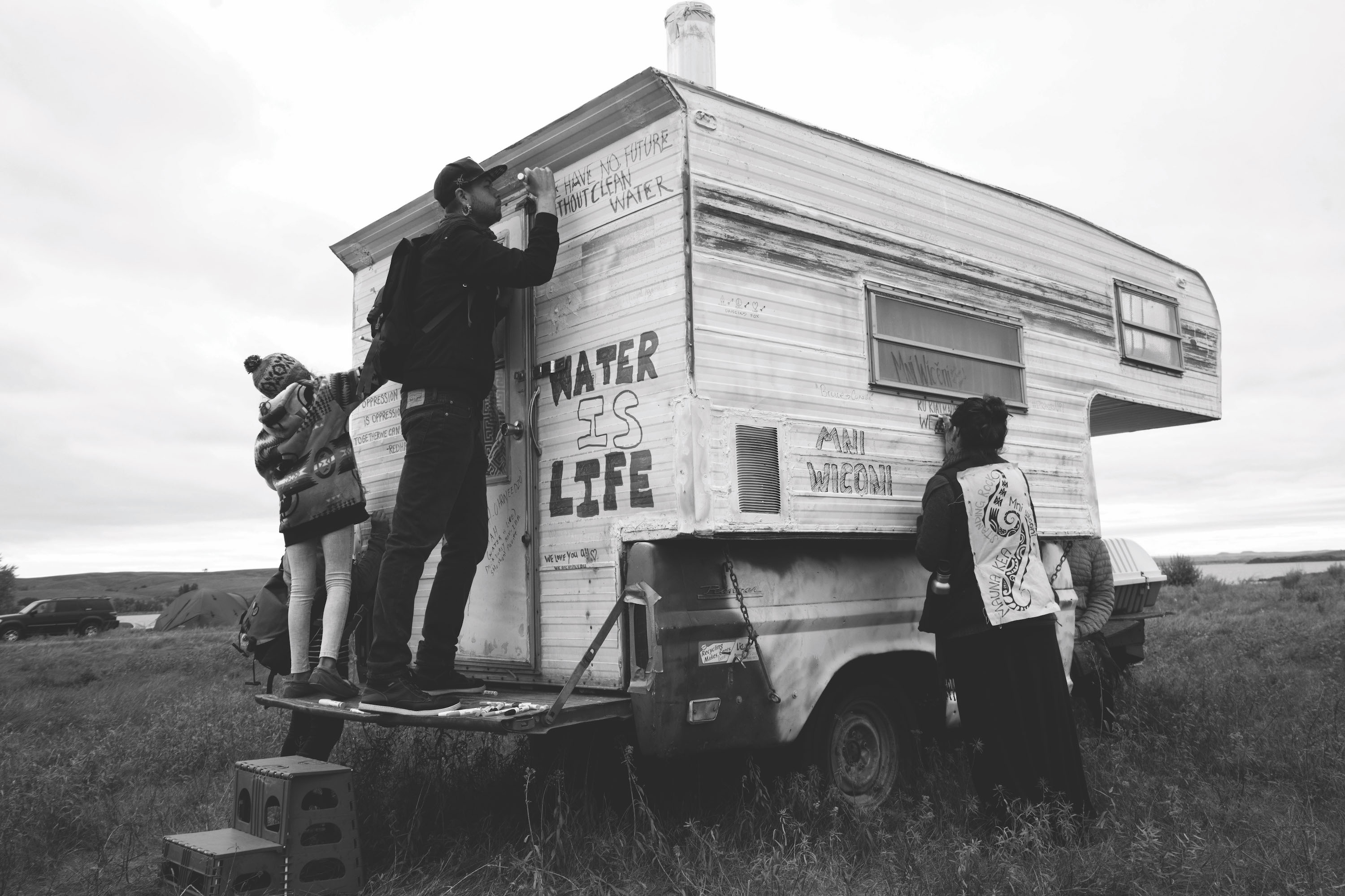
(Photo: Larry Towell/Magnum Photos)
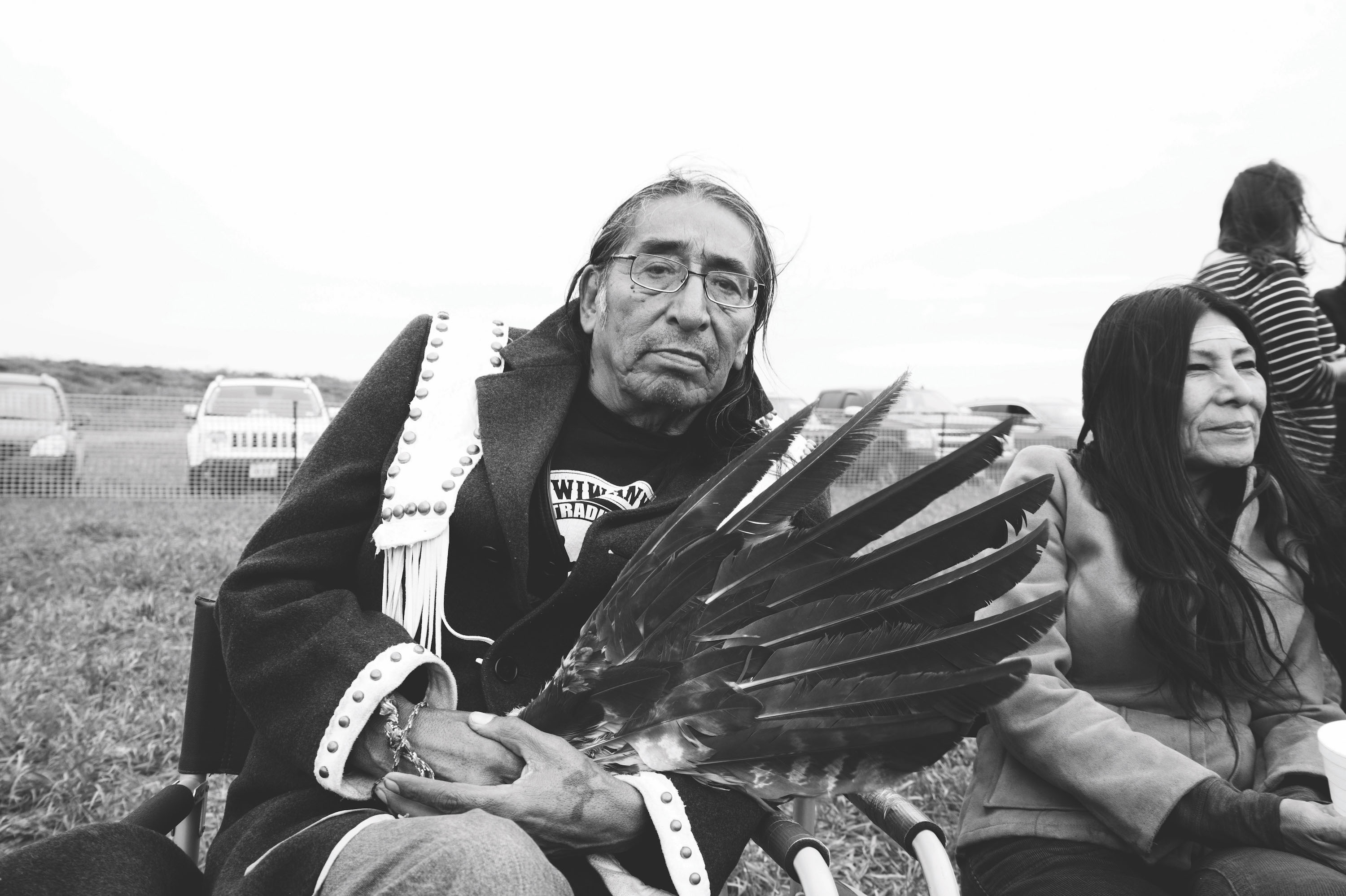
(Photo: Larry Towell/Magnum Photos)
We also now know from security documents leaked to The Intercept that TigerSwan, a private security firm hired by Energy Transfer Partners, the company behind the pipeline, intensely surveilled the Water Protectors. The North Dakota Private Investigative and Security Board filed a suit alleging that these tactics included sending undercover agents into the camps. As someone who was targeted by TigerSwan’s rent-a-spy surveillance, I can attest that their efforts contributed to an environment of paranoia and distrust.
Some of those divisions remain firmly in place, along with other lasting effects from navigating strategic differences under harsh living conditions while law enforcement launched assaults for months on end. Nevertheless, our longstanding struggles persist, and new efforts continue to emerge. The Makwa Camp, positioned against Line 3 in Minnesota, has drawn hundreds of resistors who now call themselves Water Protectors. Standing Rock’s influence can also be found at Camp White Pine, where land defenders are resisting the Mariner East 2 pipeline in rural Huntingdon County, Pennsylvania. And along the Missouri River, as the fight to stop Keystone XL re-energizes, Native activists say they are carrying the lessons, skills, and tactics of the NoDAPL movement forward.
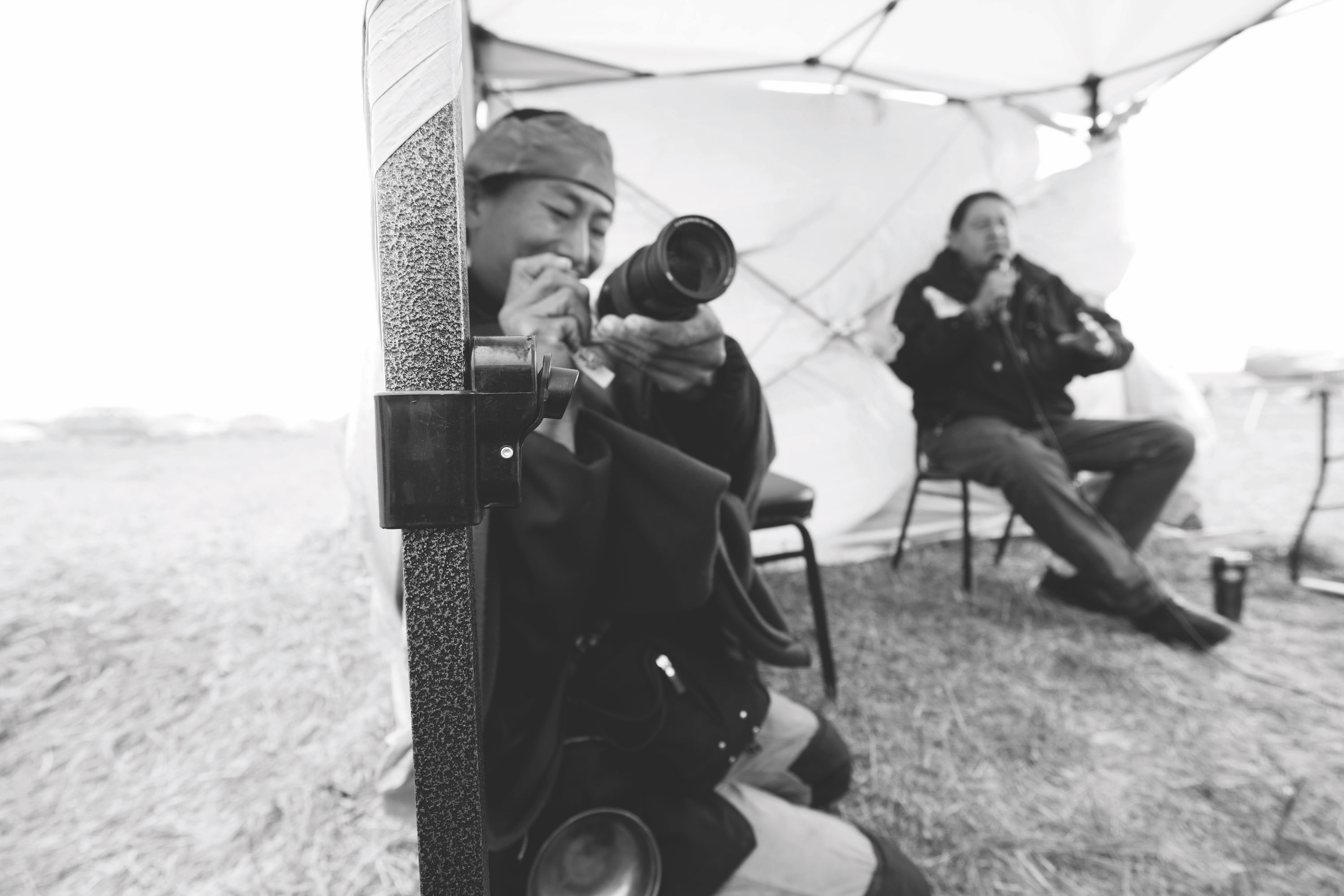
(Photo: Larry Towell/Magnum Photos)
In October of 2017, when I returned to the Village Leadership Academy to once again discuss Native issues for Indigenous Peoples Day, I was able to show those children photos of their banners hanging in the camp. We talked about Standing Rock, what it represented historically, and what it inspired. We talked about ongoing Native struggles, and the energy the movement had brought them. The students made signs and wrote messages of love and appreciation to Native activists. One of the signs read, “I want to come and help someday.”
When Raniya, who made that sign, is old enough, there will be new fronts of resistance waiting to welcome her. My hope is that their chances for success will not be dampened by what ultimately happened in Standing Rock. Because whatever else happened in that space, our imaginations were re-armed. In a world that invisiblizes us, we were seen, and, for a moment, we held space together in common cause.
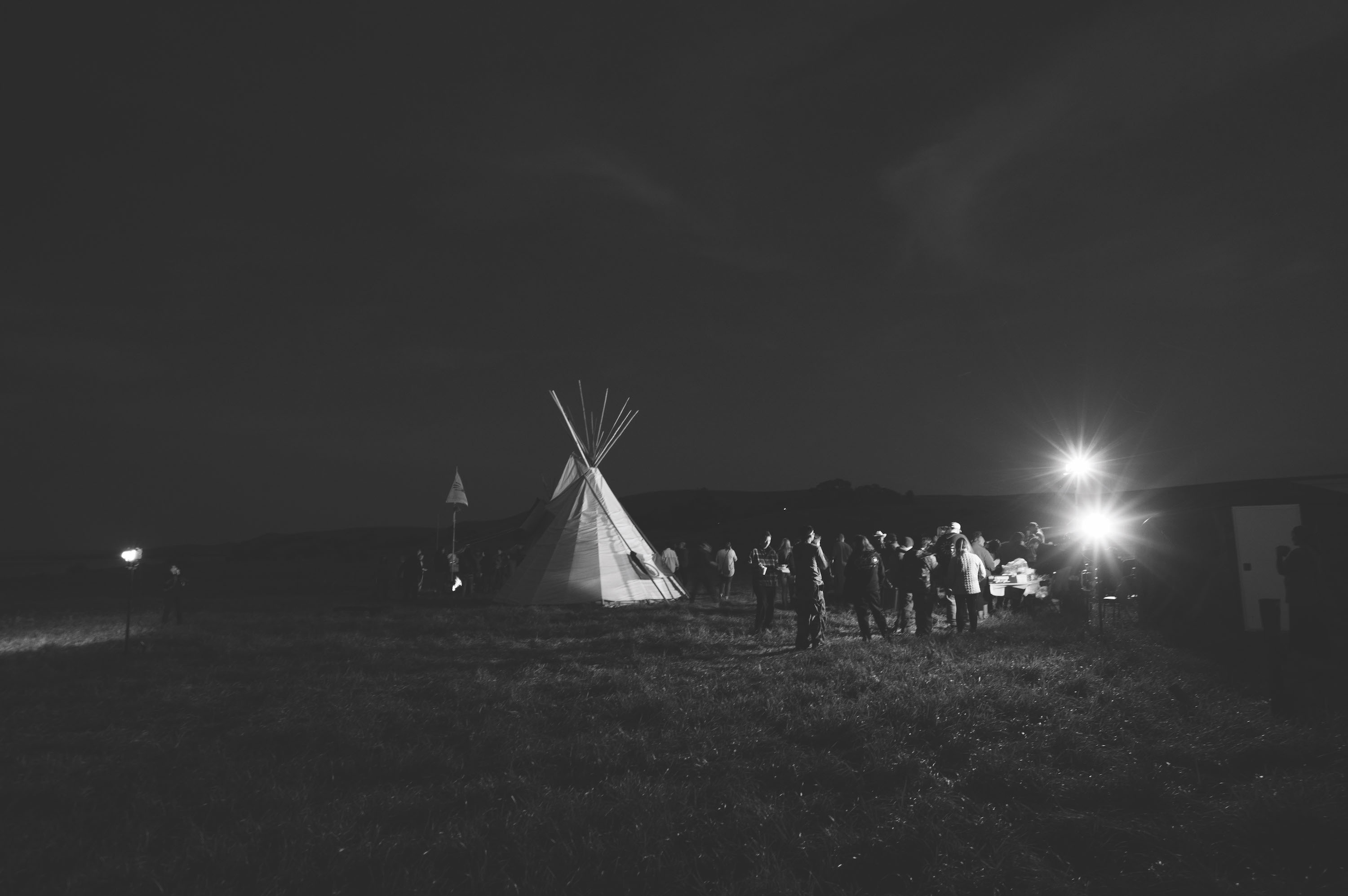
(Photo: Larry Towell/Magnum Photos)
As I look back at the movement one year on, I hope that we can cast aside the conflicts engineered by our oppressors. I believe that we can. Because in that first tiny camp, and in the massive convergence that followed, I saw what we’re made of.
The completion of the Dakota Access Pipeline broke my heart, but I still believe in us. I believe we can build forward, and learn, and dream, about sovereignty, about ourselves, and about solidarity. We can decide who we are in relation to each other. Because we are not the words on TigerSwan’s security reports, or the factions that formed in camp. We are Native people, defined by no one else, and we need not waste another breath on wars our enemies would have us fight. It’s time to starve those fires of oxygen, and breathe life into the world we know is possible.
We didn’t stop the pipeline, but we did seize a page of history from those who would make us disappear. The movement in Standing Rock was a vision of ourselves, as Native people: imperfect, beautiful, alive in the face of colonialism, and still rising.
Larry Towell is a Canadian photographer and writer who has worked in Nicaragua, Guatemala, Vietnam, and Palestine, among other places. He is a member of Magnum Photos.
A version of this story originally appeared in the March/April 2018 issue of Pacific Standard. Subscribe now and get eight issues/year or purchase a single copy of the magazine. It was first published online on March 9th, 2018, exclusively for PS Premium members.





